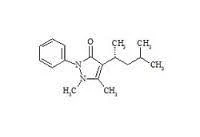- Afrikaans
- Albanian
- Amharic
- Arabic
- Armenian
- Azerbaijani
- Basque
- Belarusian
- Bengali
- Bosnian
- Bulgarian
- Catalan
- Cebuano
- Corsican
- Croatian
- Czech
- Danish
- Dutch
- English
- Esperanto
- Estonian
- Finnish
- French
- Frisian
- Galician
- Georgian
- German
- Greek
- Gujarati
- Haitian Creole
- hausa
- hawaiian
- Hebrew
- Hindi
- Miao
- Hungarian
- Icelandic
- igbo
- Indonesian
- irish
- Italian
- Japanese
- Javanese
- Kannada
- kazakh
- Khmer
- Rwandese
- Korean
- Kurdish
- Kyrgyz
- Lao
- Latin
- Latvian
- Lithuanian
- Luxembourgish
- Macedonian
- Malgashi
- Malay
- Malayalam
- Maltese
- Maori
- Marathi
- Mongolian
- Myanmar
- Nepali
- Norwegian
- Norwegian
- Occitan
- Pashto
- Persian
- Polish
- Portuguese
- Punjabi
- Romanian
- Russian
- Samoan
- Scottish Gaelic
- Serbian
- Sesotho
- Shona
- Sindhi
- Sinhala
- Slovak
- Slovenian
- Somali
- Spanish
- Sundanese
- Swahili
- Swedish
- Tagalog
- Tajik
- Tamil
- Tatar
- Telugu
- Thai
- Turkish
- Turkmen
- Ukrainian
- Urdu
- Uighur
- Uzbek
- Vietnamese
- Welsh
- Bantu
- Yiddish
- Yoruba
- Zulu
Nov . 06, 2024 07:06 Back to list
Oxytetracycline Injection Use in Sheep for Effective Disease Management and Treatment
Oxytetracycline Injection for Sheep An Essential Guide
Oxytetracycline injection is a broad-spectrum antibiotic that is frequently used in veterinary medicine, particularly for sheep. It belongs to the tetracycline class of antibiotics and is effective against a wide range of bacterial infections. This article will explore the uses, dosage, administration, and potential side effects of oxytetracycline injection in sheep.
Uses of Oxytetracycline in Sheep
Oxytetracycline is commonly used in sheep for the treatment of various bacterial infections. These can include respiratory infections, reproductive issues, and infections of the skin and soft tissues. It is particularly effective against organisms such as *Pasteurella multocida*, which is often responsible for respiratory diseases in sheep, and *Chlamydia abortus*, which can lead to reproductive problems such as enzootic abortion.
In addition to treating infections, oxytetracycline is sometimes administered to promote growth and improve feed efficiency in sheep. However, the use of antibiotics for growth promotion has come under scrutiny, leading to more regulations regarding their use in livestock production.
Dosage and Administration
The dosage of oxytetracycline for sheep can vary based on the condition being treated, the severity of the infection, and the specific formulation used. Generally, the recommended dosage is around 10 to 20 mg per kilogram of body weight, administered intramuscularly or subcutaneously. It is crucial to consult a veterinarian for precise dosing guidelines tailored to an individual sheep’s health status.
oxytetracycline injection for sheep

When administering oxytetracycline, it is important to follow proper injection techniques. This includes selecting an appropriate injection site, maintaining sterility, and ensuring the animal is calm to minimize stress. The injection is usually given in the neck area to avoid meat quality issues if the sheep is later slaughtered.
Side Effects and Precautions
While oxytetracycline is generally safe when used as directed, there are potential side effects and precautions to consider. Some sheep may experience allergic reactions, which could manifest as swelling at the injection site, fever, or respiratory distress. If any severe side effects occur, it is essential to seek veterinary assistance immediately.
Moreover, the overuse of antibiotics like oxytetracycline can contribute to the development of antibiotic-resistant bacteria. Therefore, it is crucial to use this medication judiciously and only when necessary. Implementing good husbandry practices, such as maintaining a clean environment and ensuring proper nutrition, can help reduce the need for antibiotic treatments in the first place.
Conclusion
Oxytetracycline injection is a valuable tool in managing bacterial infections in sheep. Its broad-spectrum effectiveness makes it a go-to antibiotic for veterinarians treating various conditions. However, responsible use is key to preventing antibiotic resistance and ensuring the long-term health of sheep populations. Always consult a veterinarian for the best practices regarding diagnosis, treatment, and the appropriate use of oxytetracycline in your flock. With proper care and attention, sheep can thrive, minimizing the need for antibiotics and promoting overall animal welfare.
-
Guide to Oxytetracycline Injection
NewsMar.27,2025
-
Guide to Colistin Sulphate
NewsMar.27,2025
-
Gentamicin Sulfate: Uses, Price, And Key Information
NewsMar.27,2025
-
Enrofloxacin Injection: Uses, Price, And Supplier Information
NewsMar.27,2025
-
Dexamethasone Sodium Phosphate Injection: Uses, Price, And Key Information
NewsMar.27,2025
-
Albendazole Tablet: Uses, Dosage, Cost, And Key Information
NewsMar.27,2025













